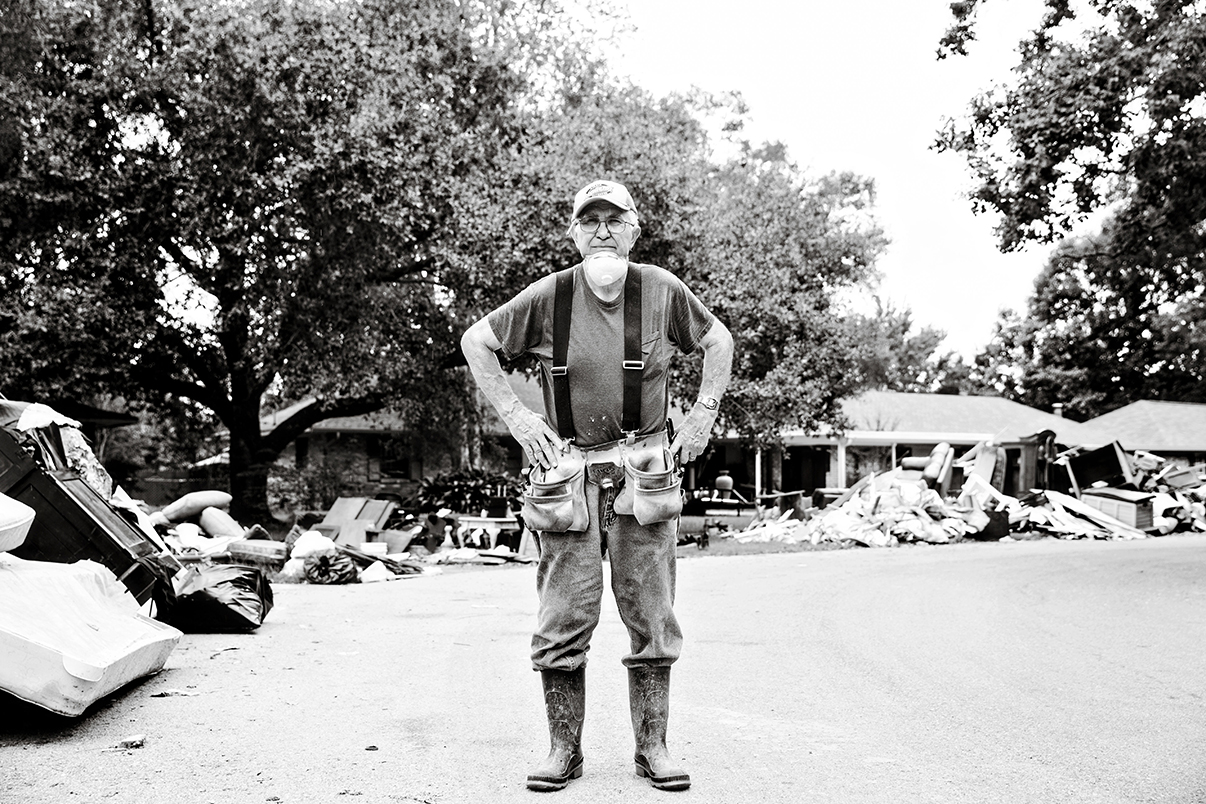
An LASM exhibit examines the aftermath of the August 2016 floods that changed Louisiana forever
A pile of broken wood, torn insulation and mildewed furniture. Old family photographs spread across the ground to dry. A rusted fishing boat sitting in a front yard. Water lines—lots of them.
These are scenes many Baton Rougeans know well. One year later, they’re still fresh.
Timed to the anniversary of the August 2016 flood, the “Faces of the Flood” exhibit at Louisiana Art & Science Museum, shows a city grappling with the aftermath of a tragedy none expected.
|
|
The photos seen in the exhibit began as an inRegister magazine assignment for photographer Collin Richie. (Editor’s note: Richie is a staff photographer for 225, and inRegister is our sister publication).

But the assignment quickly got personal for him. While documenting the flood, Richie saw the extent of the damage and the pain of those affected. He knew there was more to do. So he gathered four colleagues—local photographers Frank McMains, David Morris, Dan Jones and Kristin Basilica—and the group spent the next three weeks combing Baton Rouge and surrounding areas to ask flood victims to tell their stories. Most were willing to share.
“I think people wanted to talk,” Richie says. “They felt really forgotten.”
In the days following the flood, national media had been uncharacteristically quiet about the human tragedy that was unfolding. Richie made a Facebook page, “Humans of the Water,” where he began sharing some of the photos he and his crew were taking. The photos caught the attention of national news outlets, helping shed light on what was happening in south Louisiana.
Staring at a disaster through a lens for weeks on end can be trying. With a project that hits so close to home, it was hard for the photographers involved to not become personally affected through telling stories of suffering.
“I try to be conscious that it’s tragedy, and to not view it from an artistic standpoint,” McMains says. “To try to make powerful, provocative images out of human tragedy—that’s an impossible thing to ask, I think. At the end of the day, it’s a privilege to be able to tell people’s stories.”

While the images chronicle deep pain, they also show a sense of relief, and most of all, a deadset determination.
Of the 300 subjects Richie photographed, most people spoke matter-of-factly about their desire to get to work. Fewer than a handful cried when talking to him, even though many had lost everything.
At the one-year mark, the images have taken on new meaning for the photographers. After a tough year, most of their subjects have recovered their homes.
While the exhibit will serve as a reflection on a city tested, Richie says he hopes it also renews discussion about the source of the flooding.
“Not a lot of people have looked at why this occurred—and why those geographical areas—so [I hope we] reignite conversation about the underlying issue of what happened,” he says.
The 50 images in the museum’s collection, along with other multimedia coverage of the flood including videos, maps and news articles, will be on display until Sept. 3. lasm.org
This article was originally published in the July 2017 issue of 225 Magazine.
|
|
|
